Jasmine Tea, a Never-Fading Charm to Beijingers
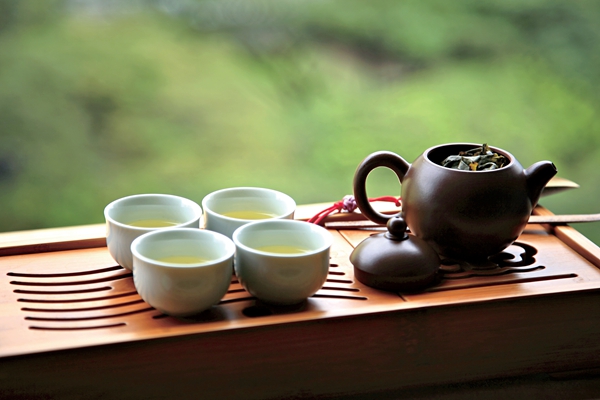
Tea drinking is a national pastime in China, where the habit has prevailed for millennia and is firmly embedded in people's daily lives. But unknown to many foreigners, residents of different regions (in the country) enjoy various leafy brew. Those sipping in south China's Guangdong Province have a liking for Pu'er tea; in East China's Zhejiang and Jiangsu provinces, people prefer green tea; for those in Southeast China's Fujian Province, Tieguanyin (a variety of oolong tea) is their favorite; while in Beijing, jasmine tea reigns supreme.
Beijingers' Liking for Jasmine Tea
Jasmine tea is green tea scented with the fragrance of jasmine blossoms. What is interesting is that jasmine tea, a product of South China, has not gained great popularity among the southerners, and is instead widely sought after by Beijingers thousands of miles away. Until recent decades, be it at home or in a tea house, Beijingers always liked to treat their guests and/or themselves to jasmine tea, which was always the predominant variety sold in the Beijing market. Even today, in most northern regions (in China), like Beijing and Tianjin, jasmine tea still takes up more than half of the local tea market, which has long perplexed people in China's southern tea-growing areas.
So what's behind Beijingers' special preference for jasmine tea? It can be traced back to the Song Dynasty (960-1279), when the trend for scented tea came into being. Dozens of varieties of scented tea appeared. However, most of them phased out in time, with only several surviving the taste of locals, and among those varieties jasmine tea was the favorite. The popularity of jasmine tea was first driven by scholars and officials. However, during the Qing Dynasty (1616-1911), the tea was enjoyed by people from all walks of life. It's said that Empress Dowager Cixi (1835–1908), who had a special liking for jasmine tea, often presented the tea as a gift to foreign diplomatic envoys. This royal preference helped raise the tea's popularity among ordinary people. Thus jasmine tea became the dominant drink of Beijingers.
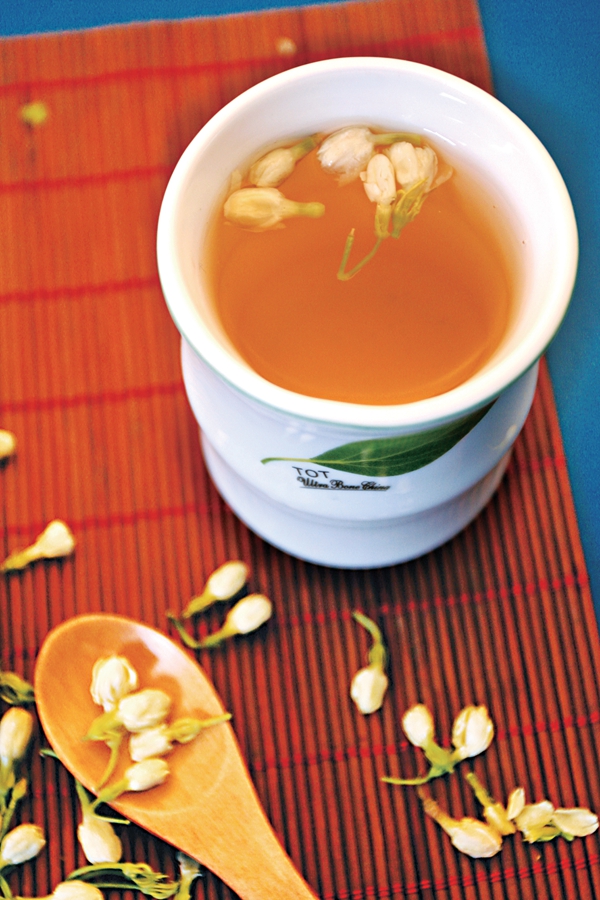
In fact, Beijingers' preference for jasmine tea can be ascribed to the city's geographic location. In old days, it took tea merchants several months to transport tea from southern China to northern China. Green tea has a short shelf-life. Even though it could survive the long-distance transportation, it would not taste fresh after arriving in Beijing. Fermented teas, like Pu'er and tuocha (a bowl-shaped compressed mass of tealeaves), can be stored for a long period of time. The teas, which can quicken the metabolism of the body, get the nod from tea lovers in Beijing.
Fusion of Tealeaves and Blossoms
Wuyutai is one of the time-honored teashop brands in Beijing, first established in 1887. "Wuyutai first won its fame by making jasmine tea, which is still its main product," said Ling Zejie, adding that Wuyutai's jasmine tea scenting craft, having been refined more than 100 years, is on China's list of intangible cultural heritage. Ling, a 37-year-old inheritor of the tea-scenting craft, joined Wuyutai after she graduated from the tea science postgraduate program of Zhejiang University (in Hangzhou, capital of Zhejiang Province).
"The jasmine tea's scenting process mainly includes two procedures — flowers producing scent and tealeaves absorbing that scent. Each procedure includes several complicated steps," says Ling.
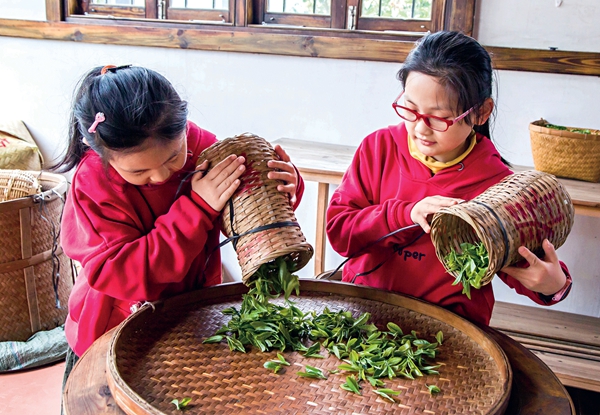
The first step involves picking tealeaves in March or April, but the scenting process can only start after jasmines bloom in June. As for picking jasmine flowers, it is important not to pick them in the morning, on a cloudy day, or within three days after rain, so as to keep the moisture of jasmine flowers low, to ensure a more refreshing fragrance.
Jasmine flowers hardly give off fragrance until after they bloom. Therefore, as the flowers' buds mature, and the petals begin to open, the fragrance starts diffusing, first strong, then gradually weakening, and finally fading when the flowers wither. As jasmine flowers usually blossom at night, the buds should be picked around 2 pm. Once collected, buds need to be nurtured to precipitate blooming. During the process, the buds that have not bloomed should be sifted out. Then, mix the flowers with tealeaves. The blooming of jasmine flowers lasts for a dozen or more hours, during which tealeaves can absorb the flowers' fragrance and retain it in the leaves' pores. This process is called scenting.
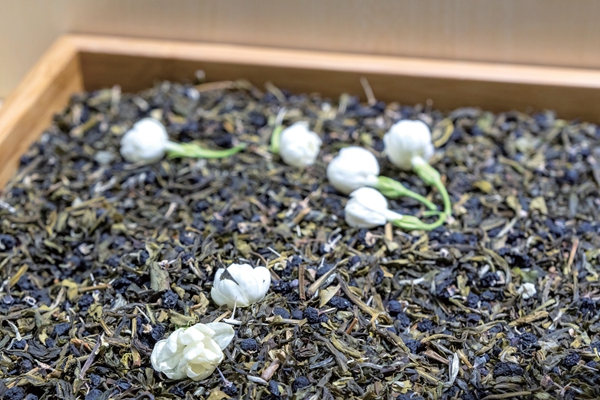
Separate the flowers and tealeaves 10-plus hours later, when the flowers give off all their fragrance. Tealeaves are dried and stored for several days, so the leaves will gradually absorb the flowers' fragrance, thus ending the scent infusion process. According to Ling, for ordinary jasmine tea, the scent infusion process needs to be repeated four or five times. For the top-grade tea, the process may be repeated as many as nine or 10 times.
"Jasmine tea-making process takes at least a month. If the weather is unfavorable, it will take more time to complete the process. Therefore, jasmine tea's processing technique is considered the most complicated among all teas," says Ling.
The scenting process is followed by tea blending, which is meant to create a consistent taste of the drink. "As tealeaves and jasmine flowers both grow naturally, there is no guarantee for their consistent quality and flavor. Therefore, craftspeople blend the flowers and leaves in different proportions, to enable customers to enjoy a consistent flavor," says Ling. She adds that as an inheritor of the time-honored tea-making craft, she will make greater efforts to improve her skills of making the tea. She also says she will pass on her "secret recipe" to future generations.

The work requires Ling to sacrifice much of her personal life. For example, she can't use any cosmetics or skin products, not even hand cream, as the cosmetics' fragrance may interfere with her scenting the tea.
"People drink tea for enjoyment, but I do it for work. My task is to remember the tastes of various tea and assess the tea's qualities, which is quite challenging," says Ling. "I eat light foods all year round, so my taste will remain keen. Irritating foods may destroy one's taste. Fortunately, I am used to eating light foods."
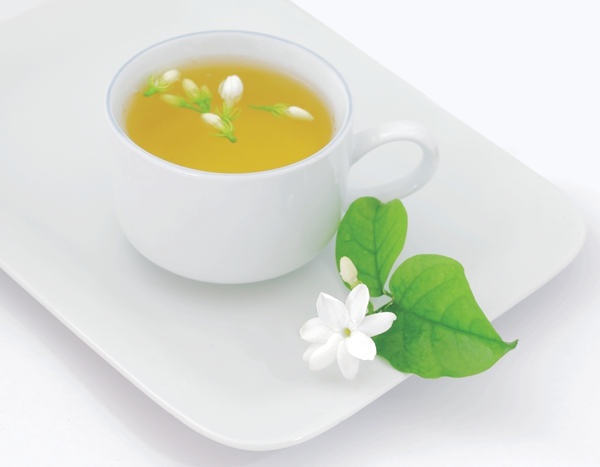
Instilling Vitality into Traditional Craft
The stereotype image of an intangible cultural heritage inheritor is usually an elderly craftsman/craftswoman. That's why during a live broadcast (in March 2022), when Ling elaborated on the tea ceremony, someone left a message asking, "Shouldn't an intangible cultural heritage master be a senior citizen? How can a young woman do this work?"
"Only when it appeals to more young people can a traditional craft be vitalized," says Ling. She adds that her company has employed many young employees, like her, to attract more young customers, as the employees have a better understanding of the young consumers' ideas. "We have created many innovative, young people-targeted products," says Ling.
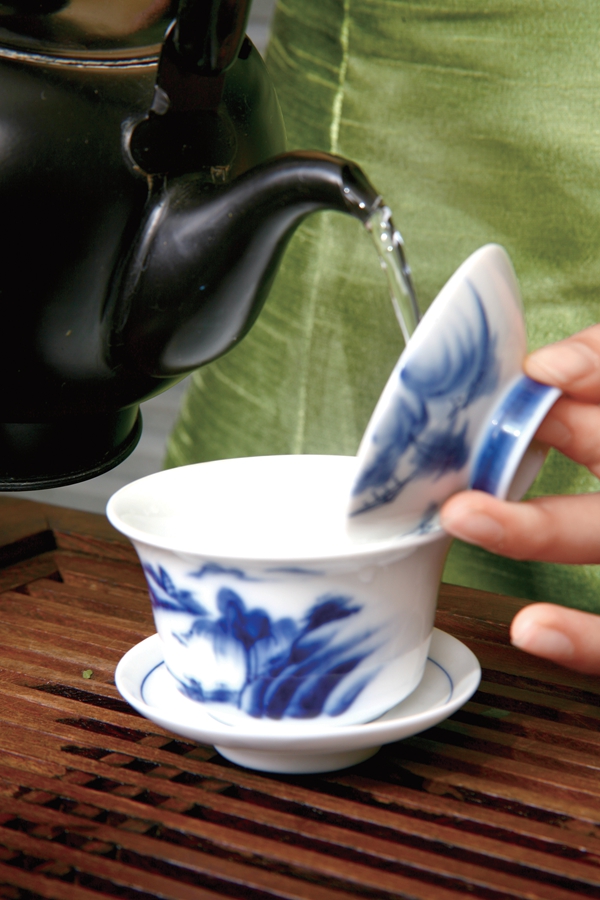
According to her, in the digital era, Wuyutai has quickened its development pace to keep abreast of the times. "While focusing on our jasmine tea business, we have also made orchid tea and rose black tea, and developed various products, including tea-flavored ice cream and refreshments. We have opened a DIY (do-it-yourself) store, where our customers can make matcha and tea themselves, so they can gain the firsthand experience of the tea ceremony. Such DIY activities have become popular among young people," says Ling.
Ling believes stable quality is the essential prerequisite for developing innovative products. "Tea is not an industrial product. We have a long way to go to ensure tea's stable, consistent taste," says Ling. She adds that only when more young people make greater efforts to protect it, can the traditional craft be passed on to future generations.
Photos Supplied by VCG
(Source: China Today/Women of China English Monthly February 2023 issue)
Please understand that womenofchina.cn,a non-profit, information-communication website, cannot reach every writer before using articles and images. For copyright issues, please contact us by emailing: website@womenofchina.cn. The articles published and opinions expressed on this website represent the opinions of writers and are not necessarily shared by womenofchina.cn.








.jpg)

 WeChat
WeChat Weibo
Weibo 京公网安备 11010102004314号
京公网安备 11010102004314号